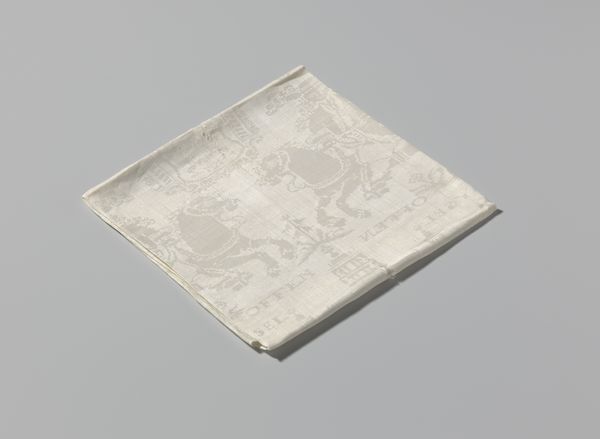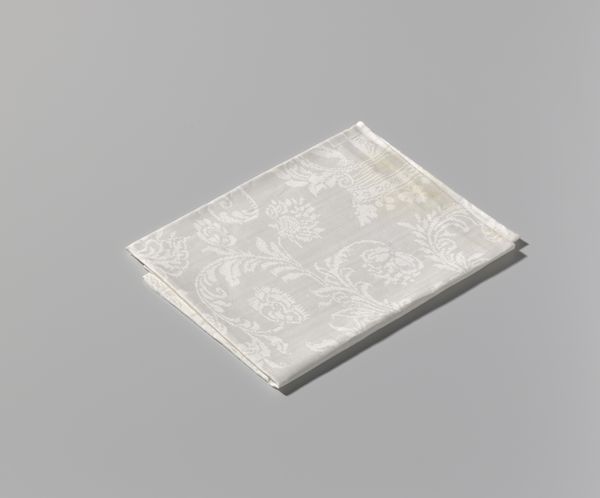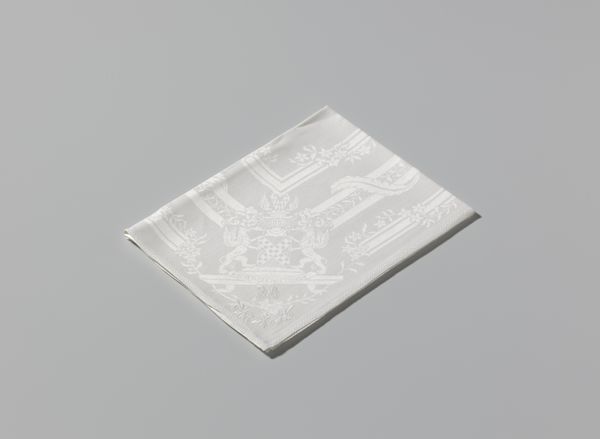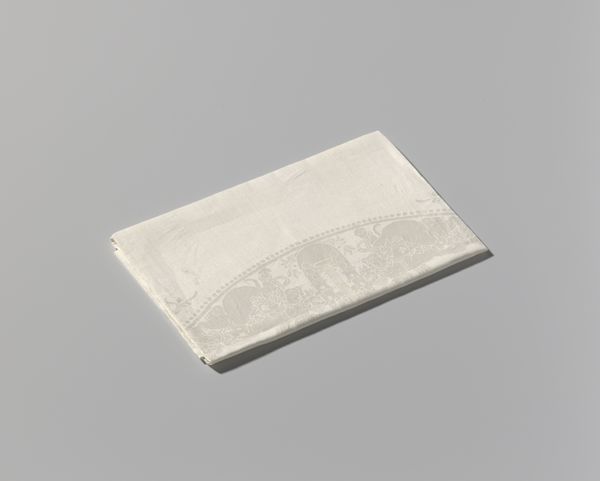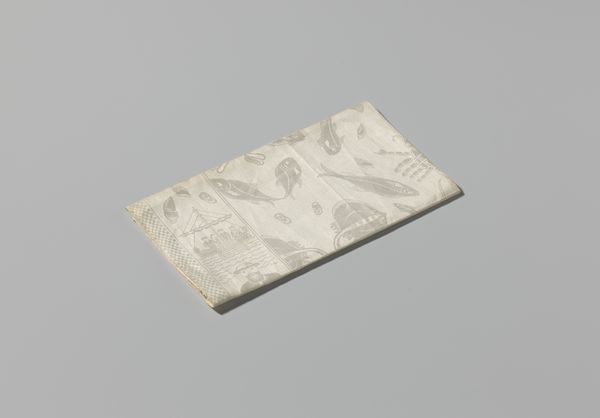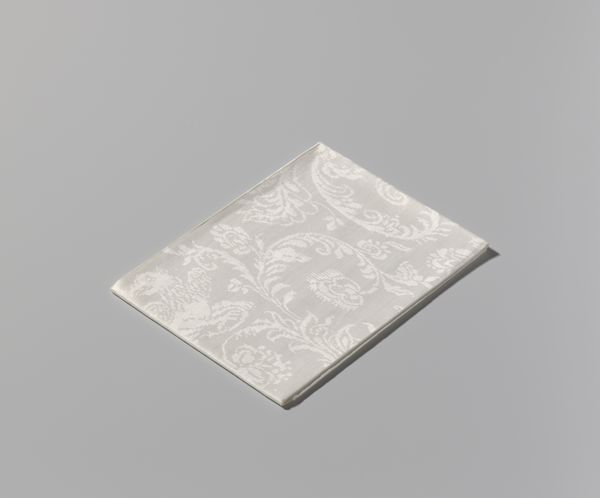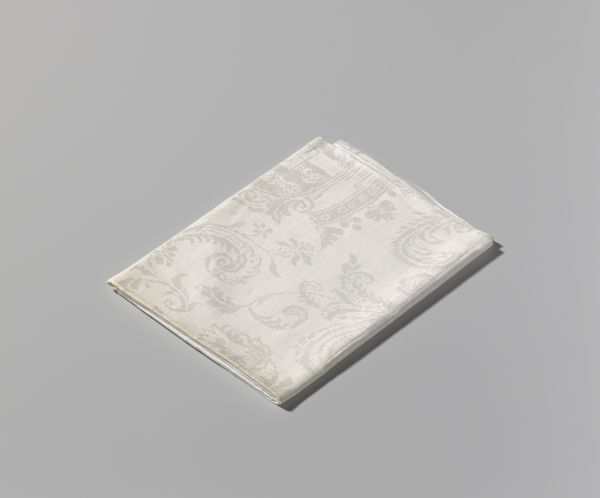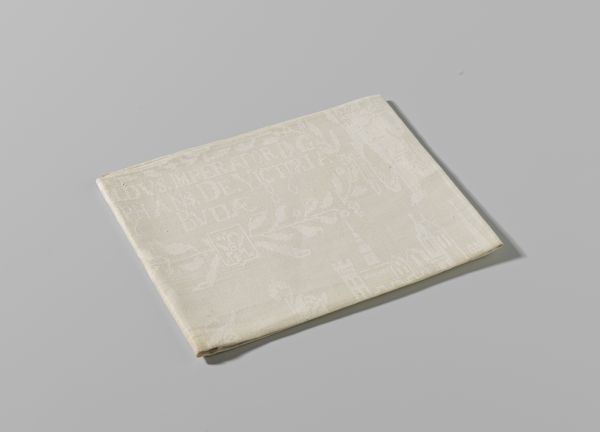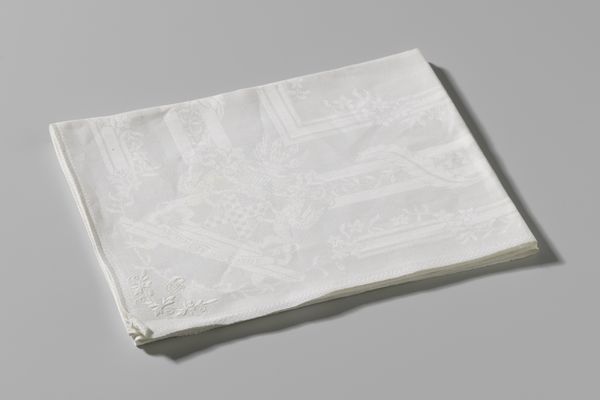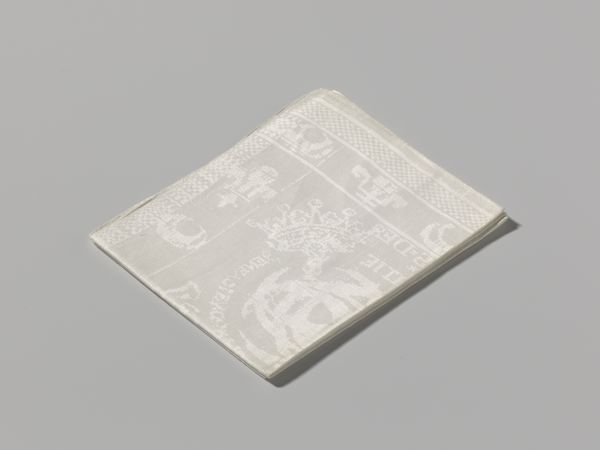
print, engraving
#
narrative-art
#
baroque
# print
#
history-painting
#
engraving
Dimensions: height 103 cm, width 72 cm
Copyright: Rijks Museum: Open Domain
This linen napkin, commemorating the siege of Grave by William III, is a fascinating object from an unknown date. The pattern woven into the fabric celebrates a military victory, yet its medium—domestic textile—speaks to everyday life. We can consider it through the lens of skilled craftsmanship and the labor involved in its creation. The complex damask weaving technique employed here involves a loom, operated by a skilled weaver who can master the intricacies of creating the imagery. It is through the laborious process of manipulating the warp and weft that images are created. Looking closely, you can see that the weave structure gives the fabric its texture, weight and form. But beyond its inherent qualities, the napkin reflects broader issues. It's a tangible connection to the domestic sphere, to political power, and to the skilled hands that transformed flax into a potent symbol of national pride. Appreciating the material, making, and historical context helps us see this object as more than just a textile: it's a window into a world where craft, politics, and daily life intertwine.
Comments
No comments
Be the first to comment and join the conversation on the ultimate creative platform.
